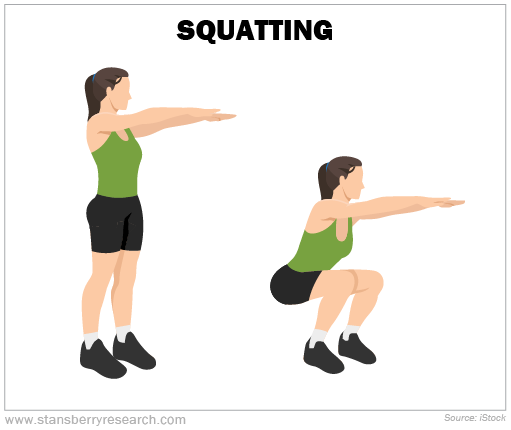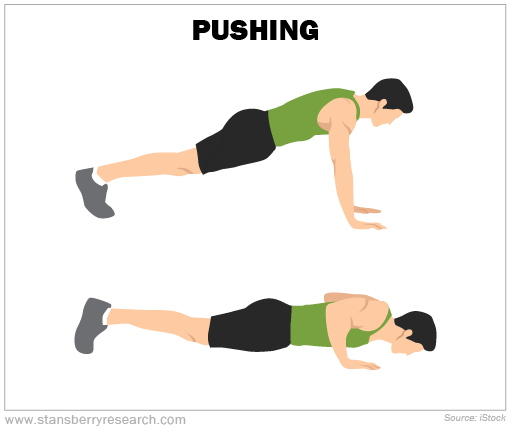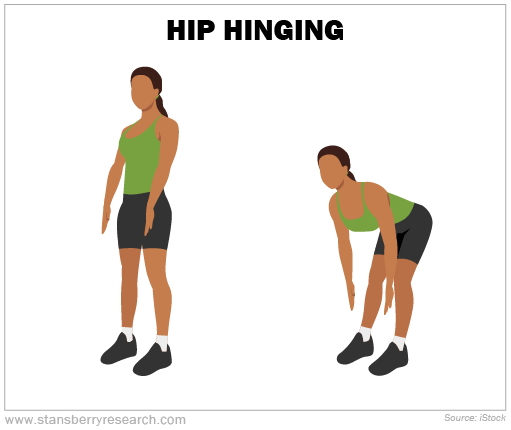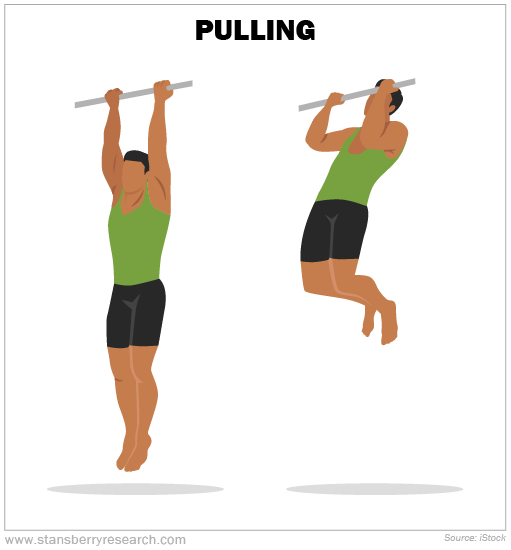Back in grade school, some of us were the kids who loved gym class. For others, gym was the worst part of the day.
For most folks, that sentiment doesn't change with age... Some people love working out and others have a tough time getting started.
But as we get older, it becomes more important than ever to maintain some degree of fitness. And recent research has shown that strength training is one of the most important things you can do to support your overall health.
When you train for strength (also known as "resistance training"), your body breaks down the muscles you are working.
That sounds counterintuitive. But that damage triggers your body to build back your muscles when you rest. And your body is wired to build those muscles bigger and stronger than they were before. The latest research shows this happens in people of all ages.
A 2013 study of nursing-home residents aged 77 to 97 with impaired mobility found that after just eight weeks of strength training using six gym machines (the chest press, rowing machine, reverse butterfly, leg press, leg extension, and crunch trainer), the participants experienced improved mobility and greater strength.
Lots of people are intimidated by the idea of strength training. The phrase evokes images of muscle-bound bodybuilders spending their days straining against barbells that seem near their breaking point... or wrangling machines that look vaguely like medieval torture tables.
It's easy for folks to decide, "I don't know how to start. That's not for me."
Other folks worry that they'll get hurt lifting heavy weights.
Don't fall into that kind of thinking...
Weightlifting results in far fewer injuries than most other sports – including racket sports – according to a famous study from the Journal of Strength and Conditioning Research. (Take note, pickleball fans.)
And as I've shown you, losing muscle is much more dangerous and likely to lead to injury than resistance training. As legendary strength coach Louie Simmons famously said, "Weak. Things. Break."
The key is to start with light weights and continually challenge yourself with small, incremental increases in weight (a concept known as "progressive overload").
And there's good news... Getting started is simple. You only need to learn four natural movements. A well-rounded strength-training routine includes:
1. Squatting: This movement is focused on strengthening your lower body, principally your thighs and butt. With your feet shoulder width apart, stick your butt out, bend at the knees, and lower yourself down like you're trying to find a stool behind you. Go as low as you can, ideally until your backside is lower than your knees. Then stand back up, pushing into the floor with your entire foot. (No tiptoes.)

Beginner move: Bodyweight box squat. Squat down until you're sitting on a box, stool, or chair. Then stand back up, pushing through your heels and toes. Don't use the chair or a wall to support your back. Brace through your core. Sit at a slow, controlled pace. Don't rock or use momentum to stand up. (Click here to see a video example of bodyweight box squats.)
Once you're ready to challenge yourself, eliminate the box. You can also pick up something with a little weight (like a gallon of milk) and hold it in both hands below your chin. That's called a "goblet squat." (Click here and here to see video examples of goblet squats.)
2. Pushing: This upper-body movement strengthens your chest, arms, and shoulders. Imagine starting a child on a swing set with a good shove. It's that simple. You can push forward (think pushups or bench presses) or overhead (think overhead dumbbell presses).

Beginner move: Pushups/Chest presses. Old-school pushups are hard to beat. But performing them with good form – tight core, straight back, elbows at a roughly 30-degree angle to your spine – can challenge beginners.
If that describes you, don't worry. You can get similar benefits from chest presses. Just grab a couple cans of vegetables, lay down on your back, and push those cans toward the ceiling. A 14.5-ounce can of peas, plus the weight of the metal makes each can about a pound. Pretty soon, you'll want to buy some light hand weights to continue challenging yourself. (Click here to see a video example of chest presses.)
3. Hip hinging: Learning how to hip hinge is critical to strengthening your hamstrings and protecting your back. It's the way our bodies generate strength safely when lifting something up off the ground. With slightly bent (or "soft") knees, push your hips back with a straight back. Imagine using your butt to slam shut a car door. Then, stand up, again pushing into the floor with your whole foot. As you get more comfortable with strength training, you can learn a variety of hip-hinge exercises: deadlifts, hip thrusts, and good mornings.

Beginner move: Hip thrust. This is a simple option for strengthening your hip hinge. Just lie down on your back, with your knees bent and your feet on the floor. Shove your pelvis toward the ceiling while tightening your butt. Then, return to the resting position. When you're ready to challenge yourself, perform this movement with a heavy book in your lap. (Click here to see a video example of hip thrusts.)
4. Pulling: Practicing pulling motions is important for strengthening your back, arms, and shoulders. It's a counterbalance to pushing movements. Chin-ups, pullups, and a myriad of rowing exercises all work these muscles.

Beginner move: Bent-over rows. Again, old-school pullups work wonders. But despite the demands of your old gym coach, many beginners – and more than a few experienced trainees – struggle to do even one.
Instead, grab those same canned vegetables you used for the chest press. With one in each hand, bend slightly at the knees and pull the cans up to your chest. The cans should come up to either side of your sternum. Imagine your elbows shooting straight back as you squeeze your back muscles. (Click here to see a video example of bent-over rows.)
With those four basic human movements, you'll work all of the important power-generating muscles in your body. You should repeat each exercise five to 10 times and then rest. That's one set. Try to do three to four sets, resting between each.
You can start practicing in the comfort of your living room. Within a few sessions, you will be ready to challenge yourself by adding weight, using household items like canned food, milk jugs, books, and so on. Pretty soon, you'll be ready (and comfortable) hitting the gym to do the same movements with 20-, 30-, or 40-pound dumbbells.
For those who find they enjoy the feeling of getting stronger, we encourage you to find a trainer near your home who can teach you how to use a barbell (the long bar with weight loaded on either end) to train these same movements. Barbells are the most efficient way to continue to challenge yourself by incrementally adding weight over time.
So challenge yourself. Start light and add strength training to your weekly regimen up to two times a week.
And if you want to read more articles like this one, check out my newsletter Prosperity Investor. In it my team and I share "deep dives" into the latest studies on living well, and also some of the top health care-sector investment opportunities. Click here to find out more...
What We're Reading...
- Something different: Is raising salmon on land the next big thing in fish farming?
Here's to our health, wealth, and a great retirement,
Dr. David Eifrig and the Health & Wealth Bulletin Research Team
February 23, 2023
